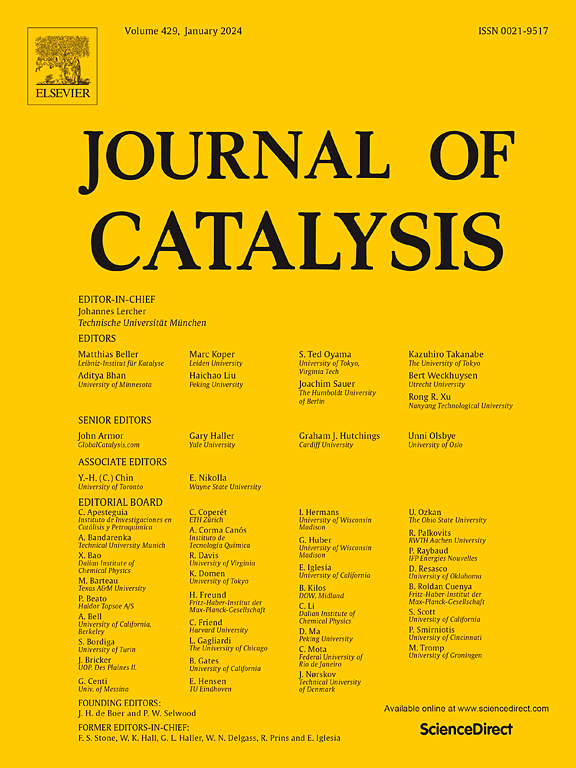Effectiveness factor for catalyst pellets of non-basic shapes
IF 6.5
1区 化学
Q2 CHEMISTRY, PHYSICAL
引用次数: 0
Abstract
The shape of a catalyst pellet affects the overall rate of reaction when the reaction is influenced by mass and heat transfer processes. While traditional modeling approaches often assume simple, basic pellet shapes (such as spheres or cylinders), this work focused on the numerical modeling of catalyst pellets with non-basic geometries, which are commonly used in industry. Using numerical techniques, the effectiveness factors of catalyst pellets with various non-basic shapes as functions of the Thiele modulus were investigated. Results indicate that the effectiveness factors of catalyst pellets of non-basic shapes, such as a hollow cylinder, cone, parallelepiped and finite cylinder with hemispherical caps, may be given by a single relationship with a generalized Thiele modulus λp, much as for the cases of basic shapes of a sphere, a long cylinder and a flat slab. This definition of the generalized modulus further provides unified numerical criteria for negligible effects of pore diffusion as λp ≤ 0.3 where within ∼10 % error (or λp ≤ 0.1 if an accuracy within ∼1 % is required) and for reaching large λp asymptotic condition as λp ≥ 3 where within ∼10 % error (or λp ≥ 10 if an accuracy within ∼1 % is required). Finally, for any shape of the catalyst pellets, the effectiveness factor can be expressed by the following single equation:
非基本形状催化剂颗粒的有效系数
本文章由计算机程序翻译,如有差异,请以英文原文为准。
求助全文
约1分钟内获得全文
求助全文
来源期刊

Journal of Catalysis
工程技术-工程:化工
CiteScore
12.30
自引率
5.50%
发文量
447
审稿时长
31 days
期刊介绍:
The Journal of Catalysis publishes scholarly articles on both heterogeneous and homogeneous catalysis, covering a wide range of chemical transformations. These include various types of catalysis, such as those mediated by photons, plasmons, and electrons. The focus of the studies is to understand the relationship between catalytic function and the underlying chemical properties of surfaces and metal complexes.
The articles in the journal offer innovative concepts and explore the synthesis and kinetics of inorganic solids and homogeneous complexes. Furthermore, they discuss spectroscopic techniques for characterizing catalysts, investigate the interaction of probes and reacting species with catalysts, and employ theoretical methods.
The research presented in the journal should have direct relevance to the field of catalytic processes, addressing either fundamental aspects or applications of catalysis.
 求助内容:
求助内容: 应助结果提醒方式:
应助结果提醒方式:


